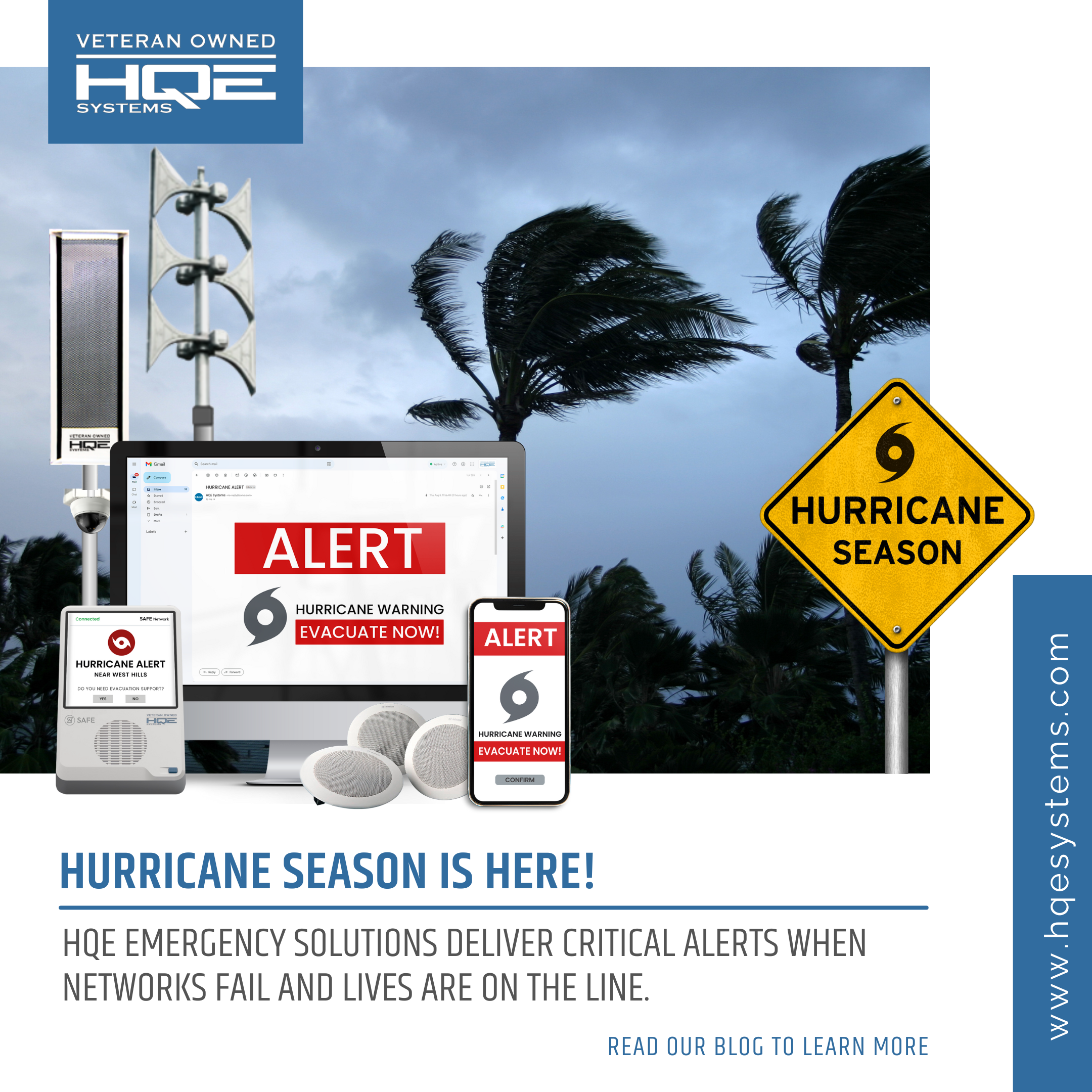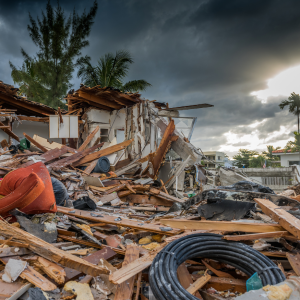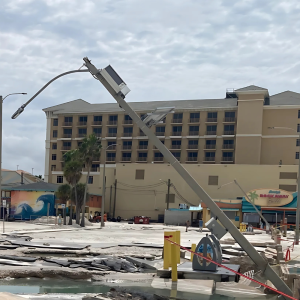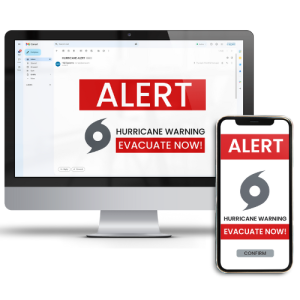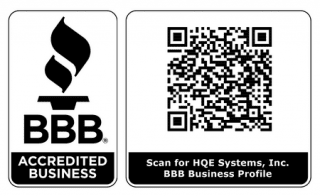The Atlantic basin is already showing its power
As of mid-August 2025, Hurricane Erin has become the first major storm of the season, reaching Category 1 with 75 mph winds and expected to strengthen over warm waters. As mentioned by The Washington Post, NOAA forecasts an above-average season with up to nineteen named storms and as many as five major hurricanes. Rapid intensification and multiple concurrent threats are becoming more common, underscoring how quickly emergencies can escalate. When minutes matter and communications falter, communities need reliable systems that keep people informed and protected before, during, and after the storm.
Hurricane Erin and the Alarming 2025 Storm Season
Hurricane season is well underway and the threat is even more severe than in recent years. As of mid-August 2025, Hurricane Erin has intensified into the first Atlantic hurricane of the season, packing 75 mph winds and accelerating toward the northeast Caribbean. Forecasts warn it may rapidly strengthen to Category 4 status, fueled by unusually warm ocean conditions, as described by The Guardian.
NOAA’s latest seasonal outlook remains bullish on storm activity. The agency now expects 13 to 18 named storms this year, with 5 to 9 becoming hurricanes and 2 to 5 major hurricanes, as described by NOAA. Mid-season forecasts still show a 50 percent chance of an above average season, compared to just 15 percent for below normal, as reported by ABC News. This level of activity means the odds of multiple storms forming at the same time are much higher, straining resources and creating overlapping crises for emergency managers.
Climate patterns are tilting the odds toward stronger, faster, and less predictable hurricanes. Warmer ocean temperatures, are increasing the frequency of major storms and fueling rapid intensification when a hurricane’s wind speeds jump dramatically in less than 24 hours. According to Climate Central, nearly 80 percent of billion dollar tropical cyclones in recent decades have involved rapid intensification. This gives coastal communities and island nations far less time to prepare, even with advanced forecasting systems.
Erin’s rapid escalation from a tropical wave to a hurricane within days is a textbook example of this new reality. It originated from Invest 97L and is now tracking westward toward islands such as Anguilla, Barbuda, and St. Martin, which are already under tropical storm watches. If Erin’s track shifts, the U.S. East Coast could face dangerous rip currents, heavy surf, and coastal surge, as reported by AP News.
The risks are not limited to the open ocean. In the Gulf of Mexico, a tropical disturbance is already raising flood concerns in Texas, despite not being classified as a tropical storm, as noted by MySA. This illustrates how threats can emerge in multiple places at once, sometimes without an official hurricane designation, yet still cause devastating damage through flooding, wind, or infrastructure breakdown.
Looking back at recent seasons, storms like Ida, Ian, and Helene have shown how quickly hurricanes can go from a forecast model to catastrophic reality. These events have also revealed the weaknesses in outdated alert systems and the high cost of delays in issuing evacuation orders or public warnings.
Communities now face two hard truths: storms are becoming more frequent, and they are changing faster than traditional response systems can adapt. When a Category 4 hurricane or flash flood can develop in a matter of hours, response agencies need communication systems that are fast, resilient, and capable of operating even when conventional networks fail.
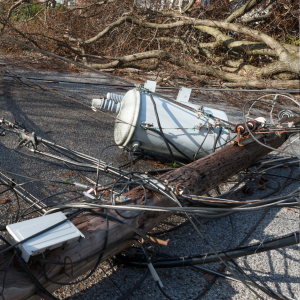
The Escalating Stakes
As hurricanes grow faster and stronger, the danger is not only increasing, it is multiplying.
Infrastructure Vulnerabilities
Our systems are only as strong as the power and networks they rely on. Extreme weather places massive strain on these fragile infrastructures. In Texas, widespread power outages continue even after storms, and communication networks fail under pressure. A study on Hurricane Beryl showed that over 2 million customers went without power in the Houston area, with low income neighborhoods facing slower recovery, as reported by academic research on power outage disparities. When vital systems fail during a storm, lives and trust are at risk.
Shrinking Preparation Windows
As hurricanes intensify rapidly, their paths become more unpredictable and their impacts more dangerous. Slower moving, more powerful storms also bring longer periods of risk. Government agencies and emergency planners are forced to rush preparations, sometimes scrambling mid storm. Budget cuts to agencies like the National Weather Service and FEMA have reduced staffing and forecasting capabilities, now increasing risk, as noted by news coverage of funding shortfalls. Multiple storms can overwhelm response systems, particularly in areas already stretched thin by urban growth.
Human and Economic Toll
When floods wash out roads or communications fail at peak storm hours, the consequences are immediate and widespread. In 2024, global economic losses from natural disasters exceeded 368 billion dollars, driven by events like Hurricanes Milton and Helene, as highlighted by Aon’s climate report. In the United States alone, storms, flooding, and wildfires account for billions of dollars in damage annually. Beyond the financial cost, storms inflict profound human losses, displacing residents and disrupting livelihoods, often hitting vulnerable communities the hardest.
At a Tipping Point
We are seeing faster, more destructive storms. Critical infrastructure is failing under duress. Emergency agencies are operating with fewer resources and less lead time. The losses, both human and financial, are mounting.
When storms like Erin intensify rapidly and bureaucracies falter, traditional alert systems cannot deliver at the moment it matters most. Communities need more than plans. They need resilient, high uptime systems that can alert everyone, everywhere, even when networks fail.
Real Life Consequences
When alerts fail, the consequences go far beyond disruption. They can cost lives. In 2025, several disasters revealed how fragile emergency systems remain and how trust unravels in the silence that follows.
Case Studies of Failed Warnings and Delayed Evacuations
In St. Louis, Missouri, an EF3 tornado struck on May 16 with winds over 150 mph, destroying more than 5,000 homes and killing five people, including three children. Despite a tornado warning from the National Weather Service five minutes before it hit, not one of the city’s 60 outdoor sirens sounded. The emergency commissioner was offsite attending a workshop. The failure left residents trapped and uninformed, according to the HQE blog Why These Recent Disasters Have Been a Wake Up Call for Emergency Managers.
In Florida, Hurricane Kiera made landfall in June and knocked out power for more than a million residents. Cell towers went dark, and many rural communities received no alerts. Local officials tried broadcasting via radio and social media, but without power or signal, the messages never reached those sheltering in place. First responders turned to amateur radio and door to door updates, but those efforts came too late for many who never evacuated.
The July flash floods in Central Texas brought torrential rains that shattered infrastructure, leading to the highest casualty count since records began with 132 confirmed deaths and more than 100 missing in places like Kerr County and Camp Mystic. Rescue teams worked desperately amid washed out roads and power failures. In every case, the breakdown was not only in the weather but in failing communication when every second mattered.
Financial and Trust Impacts
When alerts fail, the cost is not only physical. It is also financial and psychological. In Texas, rivers rose so fast that emergency crews were forced into air rescues and boat evacuations in places where earlier warnings could have saved lives. Flood damage overwhelmed infrastructure budgets, and recovery now hinges on bonds and federal aid that may be slow or politically influenced to arrive.
Public trust takes an even bigger hit. From mid August 2025 data, disasters caused an estimated 149 billion dollars in worldwide losses, with 76 billion in the United States alone, according to Munich Re and reported by CBS News in another HQE blog. When systems fail during emergencies, community leaders are thrust into a blame game, even when they lack the tools to address systemic weaknesses. People begin to question the reliability of messaging and whether anyone is truly safeguarding them.
Why Near Misses Still Matter
Even near misses, where systems almost fail or alerts are delayed just minutes, have lasting consequences. Communities remember how close they came to catastrophe, and that fear lingers. It changes how residents watch the sky, whether they prepare, and whether they trust officials to guide them to safety.
Research from March 2025 supports this point. An analysis of mobile evacuation alerts during wildfires in Chile found that SMS warnings triggered rapid evacuation responses, but effectiveness dropped sharply with each delay. Low income areas responded more slowly, revealing that without fast, equitable messaging, some groups are always a step behind.
These near misses are often underreported, but they echo through communities. When a school district tests sirens and they fail, word spreads quickly. When a critical alert is delayed due to network lag, frustrations mount. And when systems repeatedly fail during crises, they erode public confidence, making it harder to mobilize people during future emergencies.
Turning Insight into Action
These disasters prove a simple truth. Systems must fail gracefully or not at all. Real time, resilient alerting saves lives and builds trust. When communities see alerts light up on every channel, even after dark when the power is out, that reliability strengthens confidence.
This is why HQE builds redundancy into every deployment. From sirens and indoor PA systems to text, voice, signage, and satellite connectivity, the goal is to ensure every alert lands, even when traditional networks fail. This is how Clearwater stayed connected during Hurricane Helene, how Paradise managed through wildfires, and how Department of Defense sites maintain 99.99 percent uptime requirements.
These are not just stories of disaster. They are reminders that outdated systems must evolve to protect lives and preserve trust.
Introducing HQE Systems
In an era when hurricanes intensify overnight and communities have minutes to react, having the right technology can mean the difference between order and chaos. HQE Systems exists for these moments. We design and deliver mission critical mass notification and emergency management solutions that keep people informed and protected when everything else is failing.
Why We Matter Now
Hurricane Erin’s rapid growth and destructive potential is not an isolated case. Storms are arriving faster, hitting harder, and stretching emergency response systems to their limits. This is exactly the moment when agencies need technology they can trust. HQE brings FEMA approved and DoD certified solutions with a proven record of performance under the most demanding conditions.
Our Core Technology
At the heart of our offering is SiSA (System Integrated Situational Awareness), a powerful platform that unifies alerting, mapping, and incident management into one secure and easy to use dashboard. SiSA allows emergency managers to send simultaneous alerts across outdoor sirens, indoor PA systems, text messages, voice calls, and digital signage, ensuring no one is left uninformed.
To support field operations, SAFE Units provide portable, self contained alerting systems with solar power, loudspeakers, and LTE or satellite connectivity. These units are ideal for temporary command posts, off grid areas, or as a redundant backup when infrastructure is compromised.
HQE’s infrastructure is built for 99.99 percent uptime with automatic failover technology. Even during power outages or network failures, our systems continue to operate and deliver the alerts that save lives.
Real Deployments That Prove Reliability
Our solutions are operational across the United States and overseas.
- DoD Sites Worldwide – HQE systems protect more than 50 Department of Defense installations, including nuclear munitions facilities, airfields, and naval shipyards. The stakes at these sites demand nothing less than continuous reliability.
- Paradise, California – After devastating wildfires, the Town of Paradise partnered with HQE to enhance its emergency alerting and threat management capabilities, increasing community preparedness for future disasters.
- Clearwater, Florida – In one of our most high-profile deployments, Clearwater selected HQE to install 26 outdoor warning sirens and integrate lightning detection alerts for beaches and parks. During Hurricane Helene, even after the pole supporting one of the sirens was knocked down, the system still delivered timely and clear alerts that helped safeguard residents and visitors. You can read the full case study here: City of Clearwater Case Study.
Built for the Future of Emergency Management
HQE’s approach combines advanced hardware, intuitive software, and the experience of a veteran led team. We know that in a disaster, agencies do not need another “product” to manage. They need a complete, unified solution that works seamlessly with their existing systems and protocols.
We work side by side with our partners from initial assessment to installation, training, and long term support. The result is a system that is operational from day one and continues to perform reliably for years to come.
With hurricanes intensifying, wildfire seasons lengthening, and extreme weather events becoming more common, now is the time for agencies to strengthen their alerting and response capabilities. HQE Systems is ready to provide the proven, field tested solutions that communities can depend on when every second counts.
Take Action Before It’s Too Late
Hurricane Erin is not just another storm. It is a reminder that we are still in the early part of hurricane season, and the most dangerous weeks are ahead. Storms can intensify overnight, shift paths unexpectedly, and overwhelm communities that believe they still have time to prepare. Waiting for the peak to take action is a gamble that costs lives.
History shows what happens when warnings are missed or plans are delayed. In past disasters, critical minutes lost to communication breakdowns or outdated systems left residents without the information they needed to evacuate, find shelter, or protect their families. The human and economic toll is devastating and it is avoidable.
Preparedness is not just about having a plan on paper. It is about ensuring that plan works when networks fail, power is out, and panic is rising. That is why agencies, cities, and military bases nationwide partner with HQE Systems. Our FEMA approved and DoD certified solutions deliver 99.99 percent uptime, failover technology, and multi channel alerting designed for the moments when every second counts.
If Erin is a warning shot, the next storm could be the direct hit. The difference between readiness and regret is the technology, planning, and partnerships put in place today.
Now is the time to act. Whether you manage a city, a campus, a base, or critical infrastructure, we can help you identify vulnerabilities, close communication gaps, and ensure your team can respond instantly when it matters most.
Do not wait for the next headline. Start the conversation today and see how HQE Systems can help you protect lives, property, and trust before the next storm arrives.
HQE Systems is a certified Veteran Owned Company. For more information about HQE Systems Inc. and its emergency management, electronic security, and integration solutions, please visit www.hqesystems.com.

Contact: David Ditto (Early Warning Systems Subject Matter Expert)
Email: David.Ditto@hqesystems.com
Phone Number: (843) 872-7020
____________________
HQE Systems, Inc. | HQE is a Minority-Owned Service Disabled Veteran Owned Small Business (SDVOSB) providing full solutions for: Mass Notification Systems, Electronic Security Systems, Software Development Services, Contract Support, and Prototyping Services. As a brand-agnostic solutions provider, HQE prides itself in providing the BEST solution for the project. HQE possesses over 30+ factory certifications and reseller licenses to ensure our clients receive the highest quality service at the ideal budget. HQE can provide full design, installation, integrations, upgrades, and long-term maintenance support for any size and scope project.

